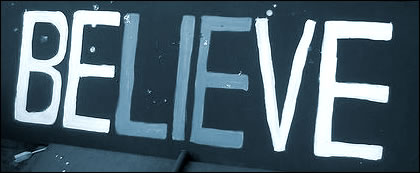
Lies are extremely difficult to detect. Research shows the average person barely does any better than chance. Part of the reason may be there’s so much misinformation about how to detect lies floating around. Years of work in psychology, including research from real police interviews conducted by Aldert Vrij and colleagues, provides guidance on which nonverbal signals do and which don’t signal lying (Vrij, 2006).
First we’ve got to dump the misconceptions:
- People don’t actually fidget and look away when they’re lying. Even some police forces still have this in the manual even though it’s just plain wrong.
- Even classic highly researched signs of lying are not that good. Less blinking, more pauses in talking, vocal tension, pupil dilation, chin raise and nervousness don’t consistently (across different people) mean someone is lying.
- It may be particularly difficult to detect lies in close friends or partners as we have come to trust them and don’t expect them to lie to us.
How do these misconceptions come about? First we are badly informed by popular culture and second we think we’re displaying these signs when lying ourselves – when actually we’re not.
So, with those misconceptions dealt with, what can psychology research tell us about how to detect lies?
- Individual differences are key. Some people’s natural behaviour looks honest while others’ natural behaviour doesn’t. This won’t tell you whether each is lying. E.g. introverts or socially nervous people tend to look as though they’re lying when they’re not. The way to do it is using comparisons. It’s possible to spot falsehoods when they are compared with truthful statements.
- Micro-expressions. Good lie detectors can pick up on tiny facial movements that give away lies. The problem is that they’re ‘micro’ so they’re difficult to detect.
- Vocal inflection can be vital. There’s evidence it’s easier to detect lies just from the voice. The eyes are relatively easy to control and it can be better if we can’t see them.
- Rely on intuition. People may be better at detecting lies with their intuition. Implicit or broadly unconscious processes can be more effective than conscious directed thought.
- Lying is hard work. Lying can place high cognitive demands on an individual – putting more pressure on a suspected liar can help with detection.
Next time you’re tempted to assume your partner would never lie to you but the nervous-looking person in the office probably does, stop and think again. Research on lying in nonverbal psychology has clearly shown that misunderstandings are rife. Lie detection is a subtle art requiring very sharp senses and these 5 proven factors show you where to start.
» This post is part of a series on nonverbal behaviour.


